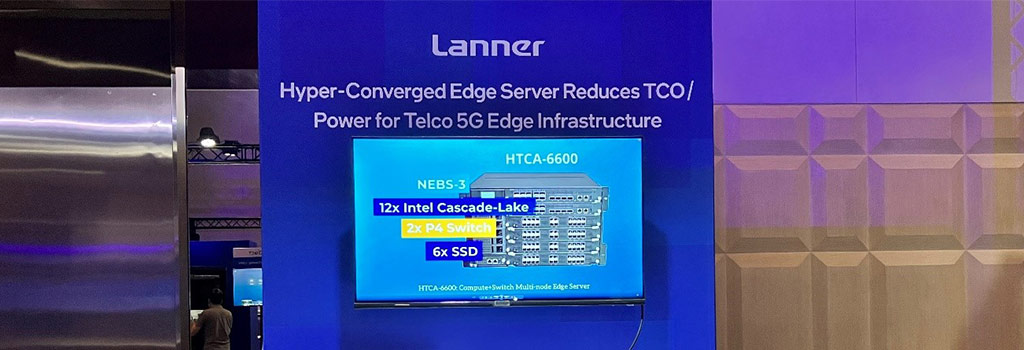Intel held "Intel Sustainability Taiwan Day" on December 7, 2022, attracting more than 600 senior executives and partners from Intel headquarters to participate. Lanner, as a partner of Intel Network Builders Titanium, was invited to participate in the keynote speech, and displayed Lanner's new generation of edge computing servers, sharing how to integrate high-speed computing, multi-core Intel® Xeon® processors, and high-bandwidth P4 programmable Ethernet switches ASIC to create an open and expandable next-generation 5G edge computing platform, which greatly reduces the power consumption and rack space of edge base station servers and saves construction costs for telecom operators.
On-site demonstration of edge computing servers for telecom computing MEC applications
Lanner showcased a new generation of hyper-converged edge computing servers, designed to be applied in distributed 5G edge computing telecommunications rooms as Multi-Access Edge Computing (MEC) and Open Radio Access Network (Open RAN) telecommunications servers to provide high-performance computing and low-latency services.
In the introduction of application design in cooperation with Bell Canada, Lanner's HTCA server has simplified the cabinet design that originally required 46U to 8U specification, reducing operating costs by up to 90% compared with traditional server equipment. The hyper-converged architecture can significantly reduce cabinet space by up to 75%, and reduce power consumption by up to 60% at the same time, thereby responding to more flexible telecommunications edge computing deployment requirements, and can quickly construct various types of network virtualization through software-defined methods application. The HTCA-E400 edge server, NCA-1515 uCPE, and NCA-4030 SASE cloud network security platform were exhibited on-site, attracting many people from the industry to stop by the booth.

Edge Computing Servers Designed for Future Telecom Computing
According to a Gartner report, it is estimated that more than half of the data will be processed at the edge base station by 2025. Lanner’s HTCA-E400 edge computing server complies with telecom application specifications, and its short-depth chassis and front-access I/O design allow it to be easily placed in the narrow space of an edge telecommunications room.
HTCA-E400 has an open, highly expandable, and flexible design. It supports carrier-grade time synchronization (IEEE 1588) and software programmability (P4 Programmable), in addition to integrating SRv6, Security, load balancing, and other network applications. It can accommodate two Intel® Tofino Switch sleds, and powerful 1U/2U computing sleds, equipped with the latest generation of Intel® Xeon® Scalable processors (Ice Lake), providing processing performance of up to 200 cores. The HTCA-E400 supports OCP NIC 3.0 modules and provides a full-height PCIe interface to support GPU/FPGA cards to provide AI-accelerated computing capabilities.





